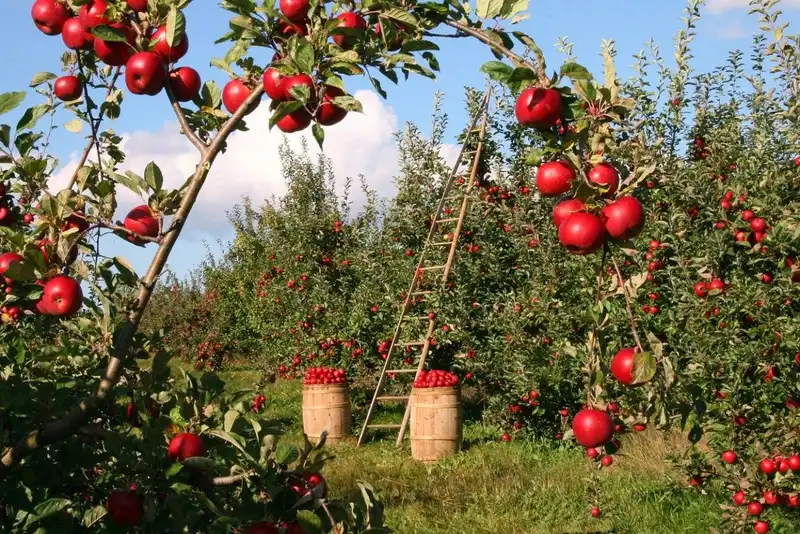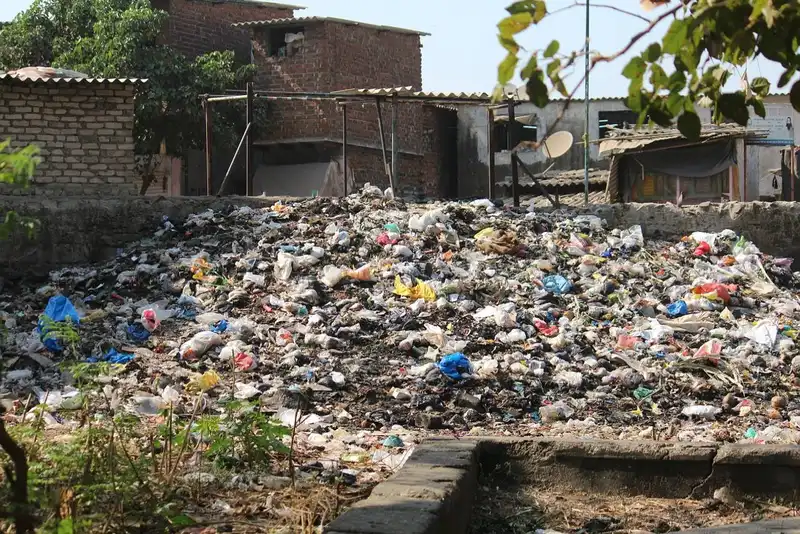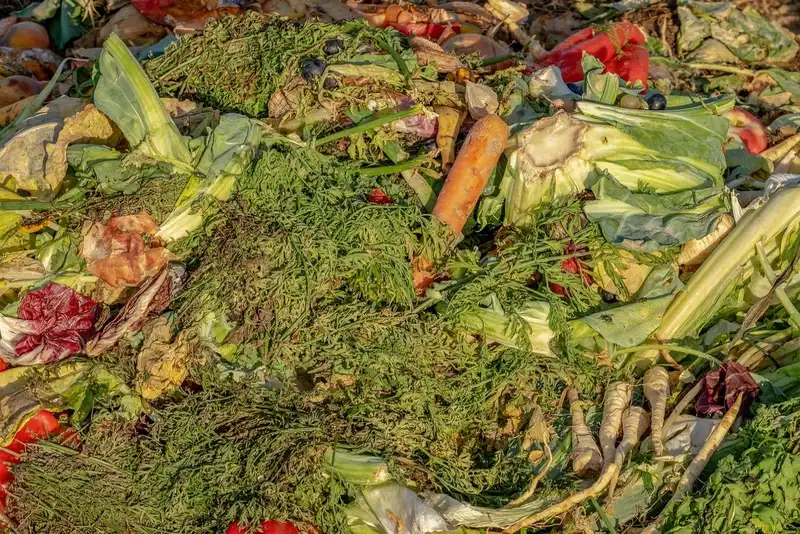The Impact of Food Waste in the US and Around the Globe

What is Food Waste?

Food waste refers to the decrease in the mass or nutritional value of edible food products resulting from the decisions and actions of consumers, food service providers, and retailers.
Common situations where food is wasted include- discarding massive amounts of leftover edible food from kitchens, removing fresh produce that is not aesthetically pleasing from the supply chain, and throwing away foods that are wrongly classified as expired.
A related issue that is important to understand is food loss. Food loss refers to the decrease in the mass or nutritional value of edible food products resulting from the decisions and actions of food suppliers in the chain, excluding consumers, food service providers, and retailers.
Common situations where food loss occurs include lack of appropriate infrastructure, natural calamities, poor practices, and insufficient skills. Together, food loss and waste represent all food products that are disposed of throughout the food supply chain. While food loss occurs post-harvest, waste occurs at the retail level.
Although food loss and waste are a global problem, there are countries that contribute to far more wasted food than others. Some countries have implemented strict anti-waste laws, including steep fines, to ensure food waste reduction of edible and sustainable items.
Unfortunately, the United States does not possess strict policies or actionable social awareness surrounding the loss and waste of food. As a result, the United States wastes the most food per capita, with an average of 209.7 pounds.
It is estimated that 40% of food that is grown, processed, and transported in the United States will never be eaten by consumers. This equates to several million tons of food each year.
Why is Food Waste Important?

A single restaurant can waste approximately 25,000 to 75,000 pounds of food per year. Food providers need to be especially cognizant of how their establishments contribute to food wastage. 85% of unused food in a typical American restaurant is thrown away, with only a small percent recycled or donated to those in need.
With 42 million food-insecure people living in the United States, there is no excuse for all this wasted food. By being conscious of the ways in which they are contributing to the problem, food providers can begin to work towards solutions to reduce food waste.
The combination of food lost in the kitchen and left uneaten on the customer's plate results in half a pound of food that goes to waste per meal served. Food providers and their clients are essentially throwing away their money for the food products they dispose of.
This widespread wastefulness is simply a bad business strategy that hurts both the pockets retailers and consumers alike. Professionals in the foodservice industry can profit economically and set an example for the rest of the United States through their leadership and action when working towards reducing food waste in their restaurant.
How Food Waste Impacts America

Disposal of edible food results in staggering financial and social consequences for the United States economy. At a retail consumer level, economic research estimates that America is losing approximately $218 billion per year on wasted food. The United States economy cannot afford to ignore losses and food waste any longer. It is time to take action.
These hundreds of billions spent on growing, processing, and disposing of food that is never eaten account for 1.3% of our total gross domestic product. Wasted food is a waste of money, and with Americans throwing away almost half of their food, our pocketbooks are hurting.
While this wastefulness is left unchecked, economic consequences will only continue to worsen. Although the financial cost of this devastating wastefulness can be estimated, the social cost is incalculable.
With 12% of households suffering from food insecurity, wasted food is a prominent social issue. 133 billion pounds of food go to waste in the United States each year, edible and nutritious food products that could otherwise be helping families in need are sent to rot in landfills.
It is estimated that currently only 10% of wasted food is recovered each year. Barriers that prevent this recovery include liability concerns and the logistics and funds needed for gleaning, collecting, storing, packaging, and distributing of disposed of edibles.
For people who work in the food industry, the unnecessary disposal of food is an ever-present part of their day-to-day lives. Combatting wastefulness and reducing food loss will not only produce financial benefits for restaurants but will also decrease countless hours spent by employees on handling a large percentage of its food that will never be eaten. It is essential that business owners and their employees take action to decrease the wastefulness of their dining establishments.
How Food Waste Impacts Restaurants

Restaurants in the United States generate anywhere from 22 to 33 billion pounds of food waste per year, literally throwing away their own money. The main reasons for this expensive waste include oversized portions, management inflexibility, and excessive menu options. Excessive menu options may motivate chefs to prepare food for meals that they will never serve, a waste of both product and employee time.
Kitchen culture only amplifies this problem, with behaviors including over-preparation of food, not finding ways to incorporate food scraps and trimmings, and improper ingredient storage. Making more sustainable food choices and conscious decisions can positively change not only your financials but also the social perspective of your establishment.
As a food industry professional, you have a social responsibility to do your part in decreasing your establishment's eco-footprint. Portion sizes, often two to eight times larger than the USDA or FDA serving size suggestions, can be difficult for your clients to consume in one sitting and encourage a social culture of overindulgence and wastefulness.
On average, 17% of meals are left uneaten with 55% of these edible leftovers left behind at the restaurant for disposal or wasted at home. If we rescued just 15% of the food we waste, we would be able to redirect that food to feed 25 million Americans each year.
Professionals in the food industry should feel proud of the positive differences they are making towards changing the industry standard. Making environmentally conscious changes will help to prevent wastefulness from continuing to financially and socially sabotage your business.
How to Reduce Food Waste

Becoming zero waste may not be a realistic goal for food industry professionals just yet; however, experts suggest that focusing on what can be controlled is helpful in pragmatically decreasing overall wastefulness. Thankfully, there are many tips you can implement to take action in reducing food waste, including-
- Installing a POS system with detailed inventory tracking to help manage your food costs and know what products are being used and which are being wasted.
- Donating uneaten food to your staff, a shelter, or a food recovery center. For the more technically savvy, there are apps to help tackle food waste and assist in the process.
- Making a group effort, including your entire staff when brainstorming and formulating practices to decrease your establishment's eco-footprint. Together, create a food waste management plan that everyone feels comfortable with, and inspired to participate in.
- Downsizing your menu to decrease wasteful prep and cut back on necessary ingredient purchases. Utilizing a POS system can help you decide which items to keep on your menu.
- Recycling glass and cardboard by providing alternative trash cans. Composting on your own, or dropping off food scraps to a composting drop-off site are also great methods to reduce wastage.
- Utilizing leftovers for food displays instead of freshly prepared food
- Decreasing portion sizes in accordance with USDA and FDA standard in order to discourage disposed leftovers
The EPA also provides a food recovery hierarchy that can help guide your preventative measures. Rated from most preferred to least preferred, consumers can attempt to take several steps before taking the last resort action of sending waste to a landfill or incinerator.
These steps in descending order include source reduction by reducing the volume of surplus food generated, feeding hungry people through donations, feeding animals food scraps, industrial uses such as fuel conversion, and composting to create nutrient-rich soil.
Implementing these practices in dining establishments would decrease the eco-footprint of the United States. By setting a good example to clients, food industry professionals can potentially inspire their patrons to become aware of and decrease their waste in their own homes.
The Benefits of Reducing Food Waste

Reducing wastefulness will boost the financial and social wellbeing of food industry businesses.
Making changes to waste less food has the potential for preventing financial waste.
Food industry professionals will save money by not wasting employee hours or purchasing foodstuffs that will ultimately not be consumed.
In fact, 4-10% of food purchased by restaurants is disposed of before it even hits the customer's table. Implementing recycling and waste prevention strategies can result in an estimated $1.9 billion of annual business profit potential.
The social wellbeing of businesses will also be boosted with these changes. Providing food donations to food-insecure people creates a sense of community. When you embrace your community, your community is likely to embrace you back.
Alternatively, restaurant owners may choose to provide leftover food to their employees free of cost. Not only will workers feel more appreciated, but they may also feel more connected to the product they are creating.
Establishing food preservation practices will benefit not only the social wellbeing of the food industry businesses but also the larger community that they serve. This butterfly effect very well has the potential to change the eco-footprint of America as a whole.
A World Without Waste

Decreasing or eliminating wastefulness would not only benefit businesses in the food industry but America as a whole. An additional 15,000 permanent jobs could be produced to facilitate recycling, composting, and related practices. America could redirect the hundreds of billions spent on growing, processing, transporting, and disposing of uneaten food.
These costs are also transferred to consumers who pay higher costs for the food they purchase and are often forced or encouraged to buy much larger portions than needed. Consumers would collectively save around $5.6 billion annually by not purchasing food they will never eat.
With changes towards consciously producing and supplying food, American consumers will be motivated to make more economically and socially beneficial choices. With 43% of food in American homes being thrown away, changes in consumer attitudes and practices will greatly decrease our overall waste.
There are both societal and social consequences of food carelessness. Americans express concern about this wastefulness, with 75% of respondents rating the issue as important or very important to them. In 2015, the United States Department of Agriculture and the United States Environmental Protection Agency embraced federal targets to cut food waste by 50% by 2030.
Social and societal attitudes clearly reflect a willingness and motivation to decrease wastefulness. However, without education and resources, these well-meant intentions may also be wasted.
Not only are there severe economic and social consequences of wastefulness, but there are also exorbitant environmental consequences that cannot be ignored, ranging from negative impacts on climate change to the squandering of precious natural resources.
Environmental Impact of Food Waste

It is absolutely essential for the health and preservation of our environment that we decrease and work towards eliminating food loss and waste globally. Greenhouse gases absorb infrared radiation and heat up the earth's atmosphere which results in both global warming and climate change.
Landfills produce a large amount of methane, which is many times more powerful than carbon dioxide. The loss and waste of food also deplete our planet's most precious resources. Agriculture claims 70% of the water used around the world and roughly 1/3rd of the world's agricultural land is used to grow food that is wasted.
While developing countries are more likely to lose food at the production level due to infrastructure and harvesting techniques, middle and higher-income regions show more waste at the consumer level due to poor business practices and food social norms.
The further down the food chain that food is lost or wasted, the greater the environmental impact. There are not only environmental consequences but also a very real human cost. 1 in 9 people do not have enough food to live their lives healthily and more people die from hunger every day than from malaria, AIDS, and tuberculosis combined.
Our need as individuals, nations, and as a global community to change our practices is a pressing issue and social responsibility that can no longer be ignored.
Key Takeaways
- Globally, 1/3rd of food produced for human consumption never reaches our tables as a result of food loss and waste, even though 820 million people suffer from hunger.
- Food loss occurs post-harvest, waste occurs at the retail level.
- The United States wastes the most food per capita and throws away nearly half of its edible food.
- Globally, people must take action and change their behaviors to decrease wasted food and encourage a more financially, environmentally, and socially conscious atmosphere. Food industry professionals have the opportunity to lead this initiative.